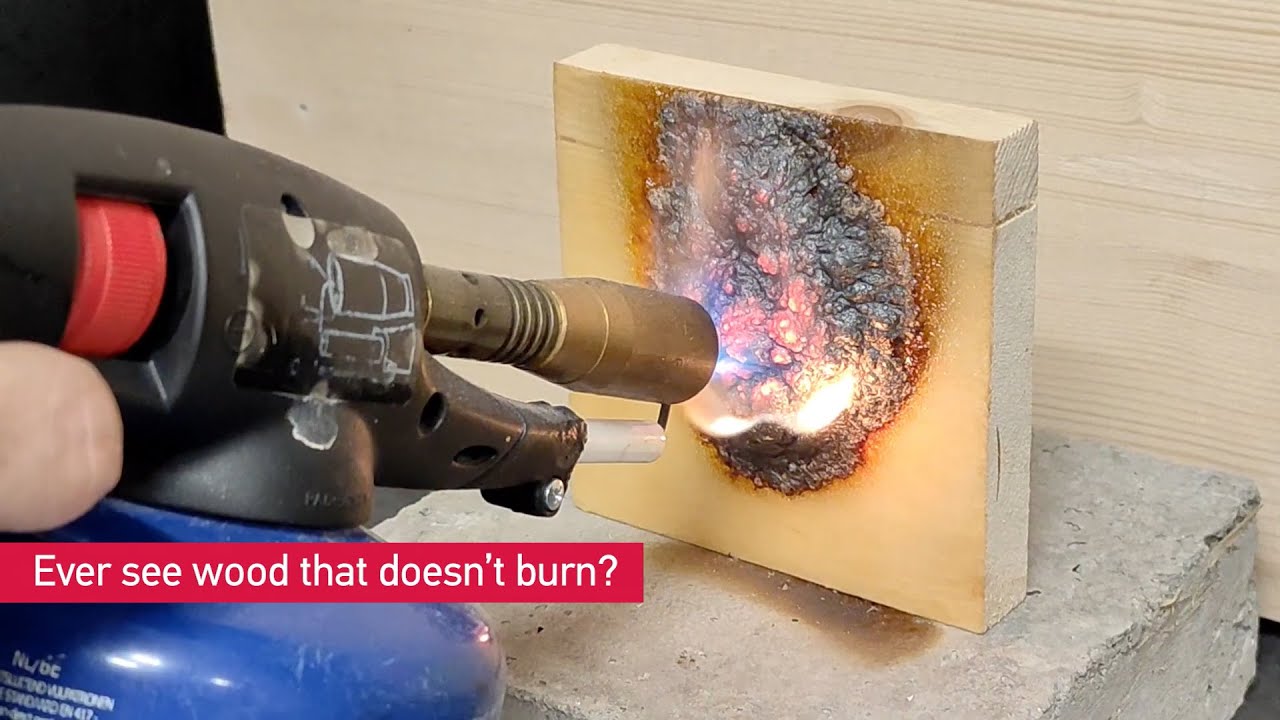Researchers at Nanyang Technological University have developed a coating that they say makes wood “fireproof’ while allowing the woodgrain to show through. The coating, about 75 microns thick, creates a flame barrier when activated by fire.
When heated by flame, a series of chemical reactions happen, causing the coating to become a char that expands to more than 30 times its original thickness. This char prevents the fire from combusting the wood underneath, as shown in an accredited lab test.
“Most timber or wooden panels only have a transparent coat that protects them from moisture, weather corrosion, termites or pests, and are not designed to withstand high heat. Thus, timber can still burn very quickly, especially if it is unprotected,” explained Assoc Prof Dasari, an expert in fire-retardant materials.
“In our coating, we used technology to lock certain compounds and interact with the resin. They will actively participate in the chemical reactions systematically when exposed to high heat, thus leading to the formation of char. This char was engineered to be extremely heat-resistant, insulating the wood underneath from the high heat.”
The innovation has a technology disclosure filed through NTUitive, NTU’s innovation and enterprise company, and the commercialization project was funded S$250,000 through the NTUitive Gap Fund.
NTU Vice President (Innovation and Entrepreneurship) Professor Louis Phee, described this innovation as a revolutionary step forward for the timber construction industry. “Leveraging on NTU’s strengths in materials sciences and engineering, this is an example of how fundamental research can be translated into commercial applications with high impact, given that the invisible coating enhances both safety and aesthetics in timber construction with few to no drawbacks,” Phee said. “Innovations like this are what NTU can offer to industry players who are keen to work with us to license, commercialize and adopt technologies that can be used to create unique products that will ensure competitiveness for Singapore in the global market.”
The NTU team is now in licensing talks with different companies. Venturer Timberwork is actively exploring the usage of this innovative coating to protect their mass-engineered timber elements in one of their current projects. Bolstering engineered timber’s resistance to fire is critical to expanding the uptake of this technology across more of the built environment, says Kevin Hill, Venturer’s managing director.
“At Venturer, like other stakeholders in the Mass timber construction sector, we believe more new projects will look at using this new coating technology if fire resistance can be improved. It has the potential to reduce cost and reliance on other more expensive solutions, such as using thicker timber to increase charring layers, or by encapsulating the timber with fireboards, which negates the beauty of this sustainable and productive building technology.”
Written by Larry Adams
Original article
